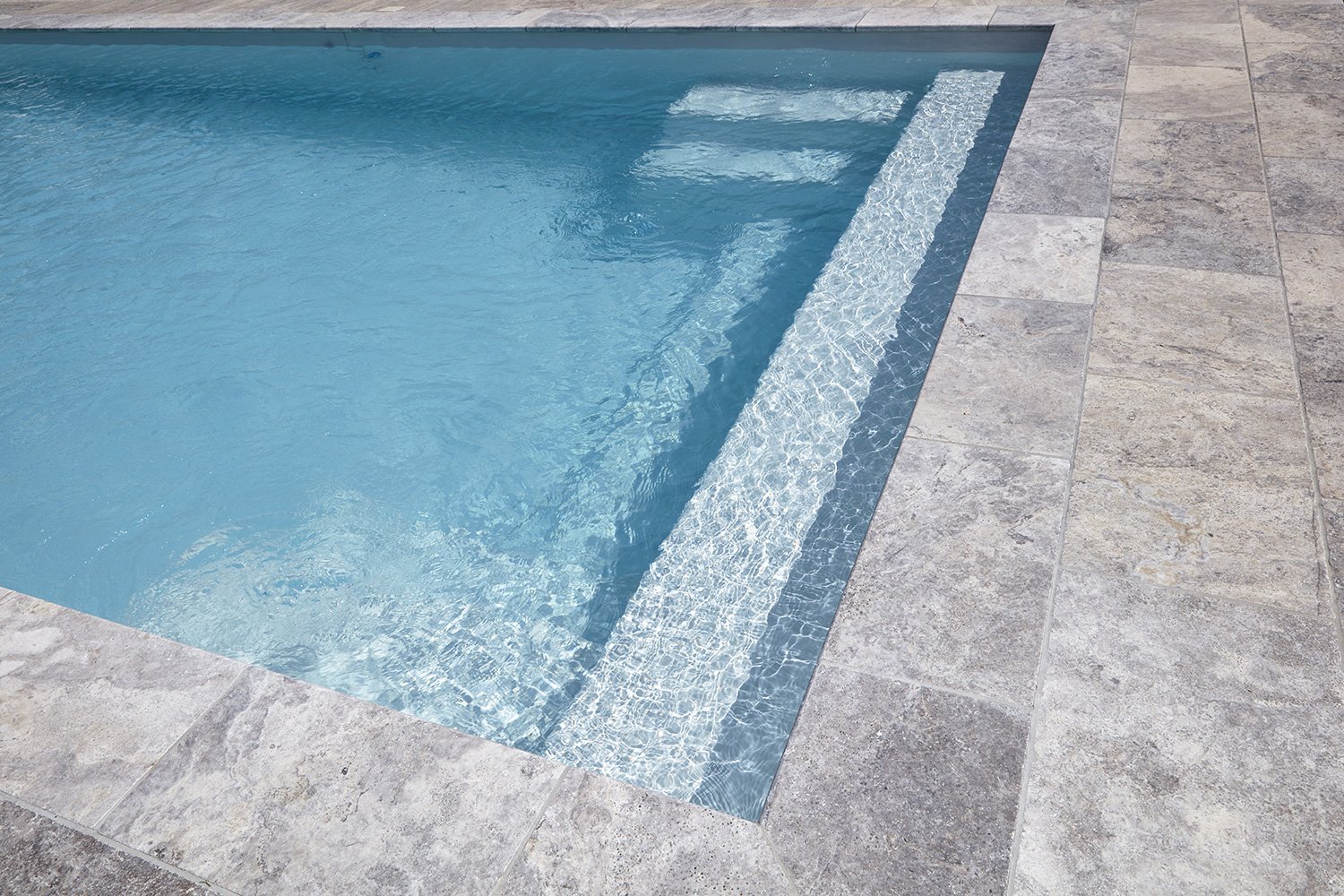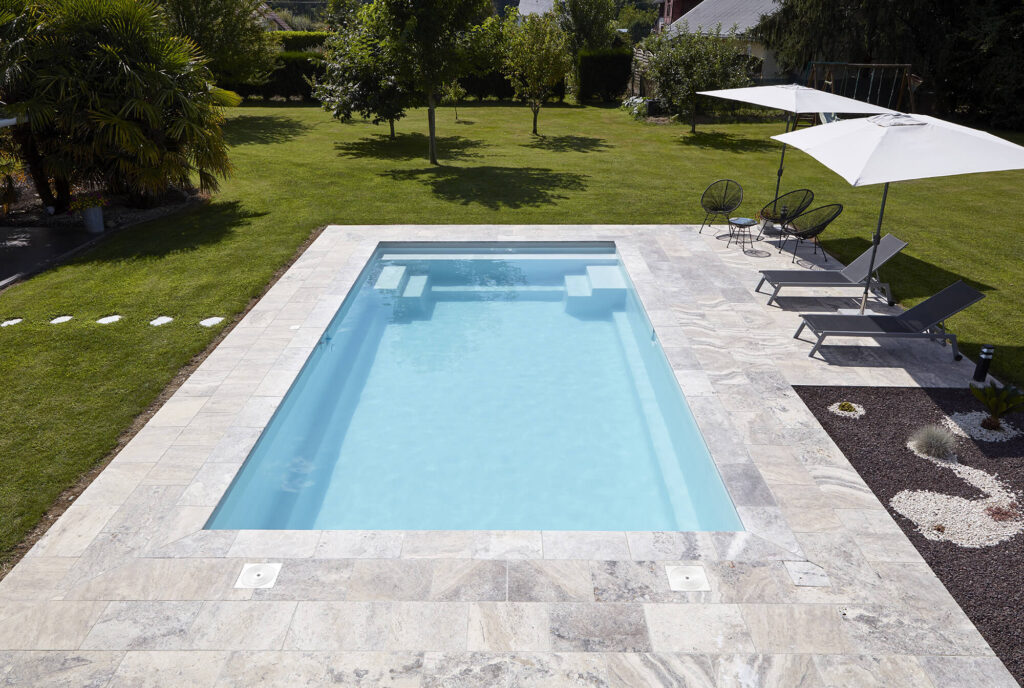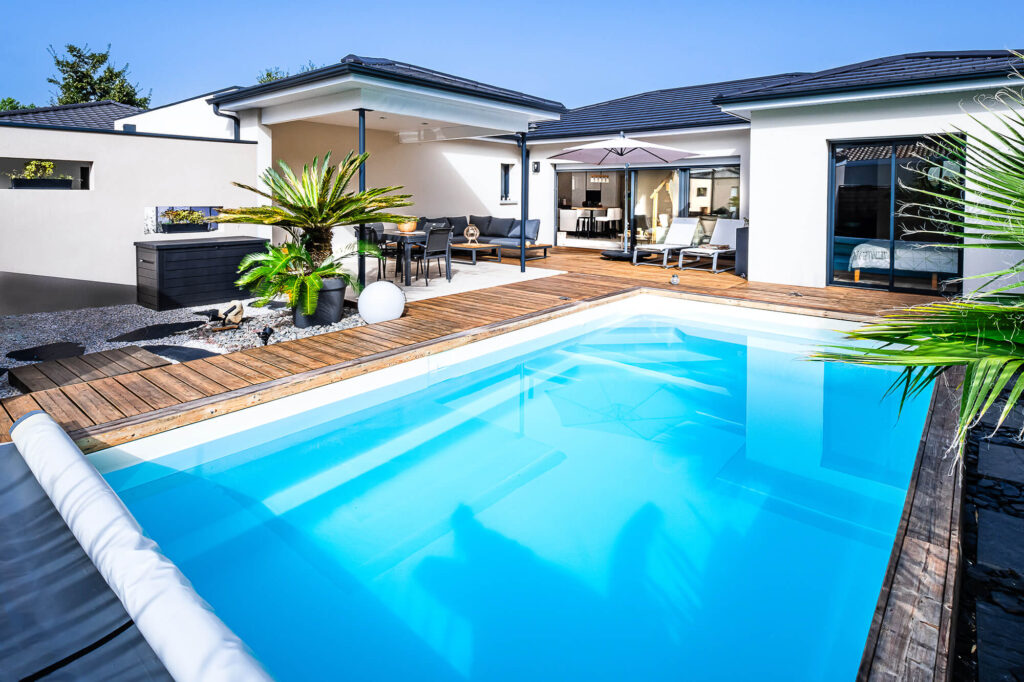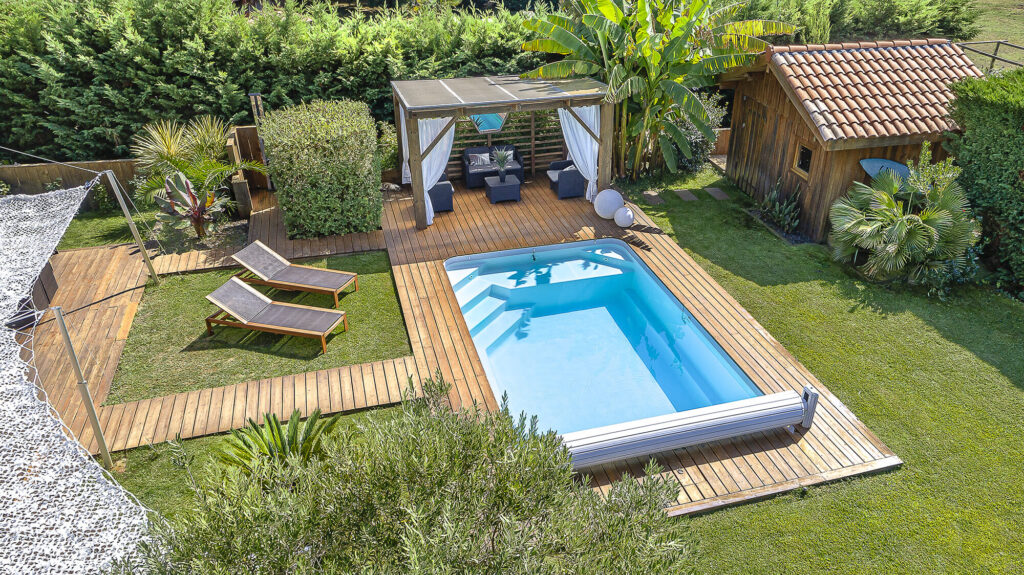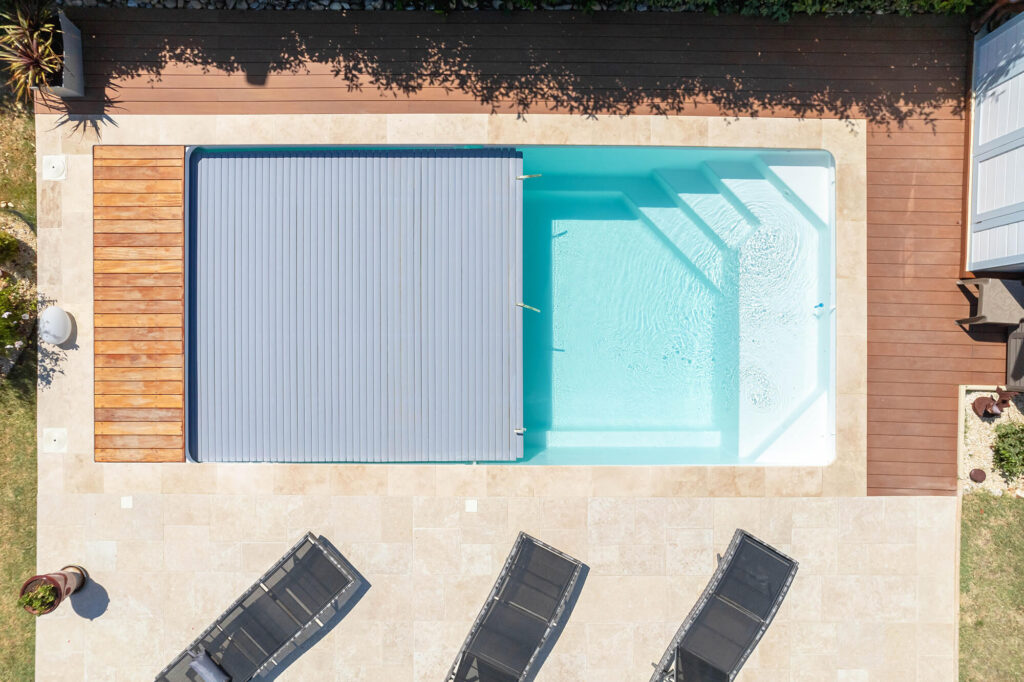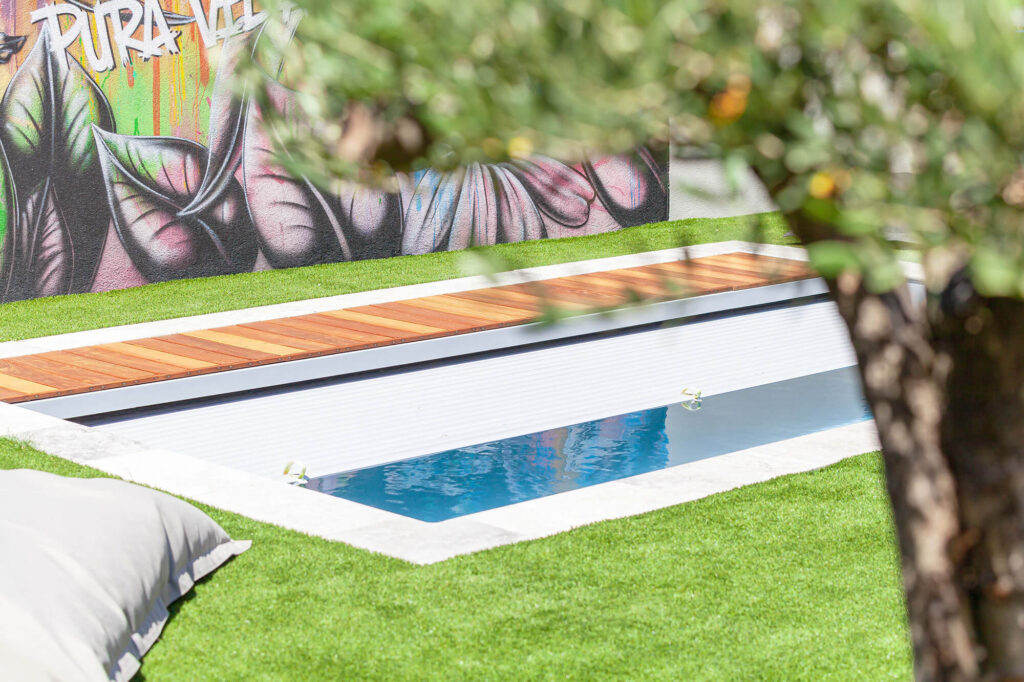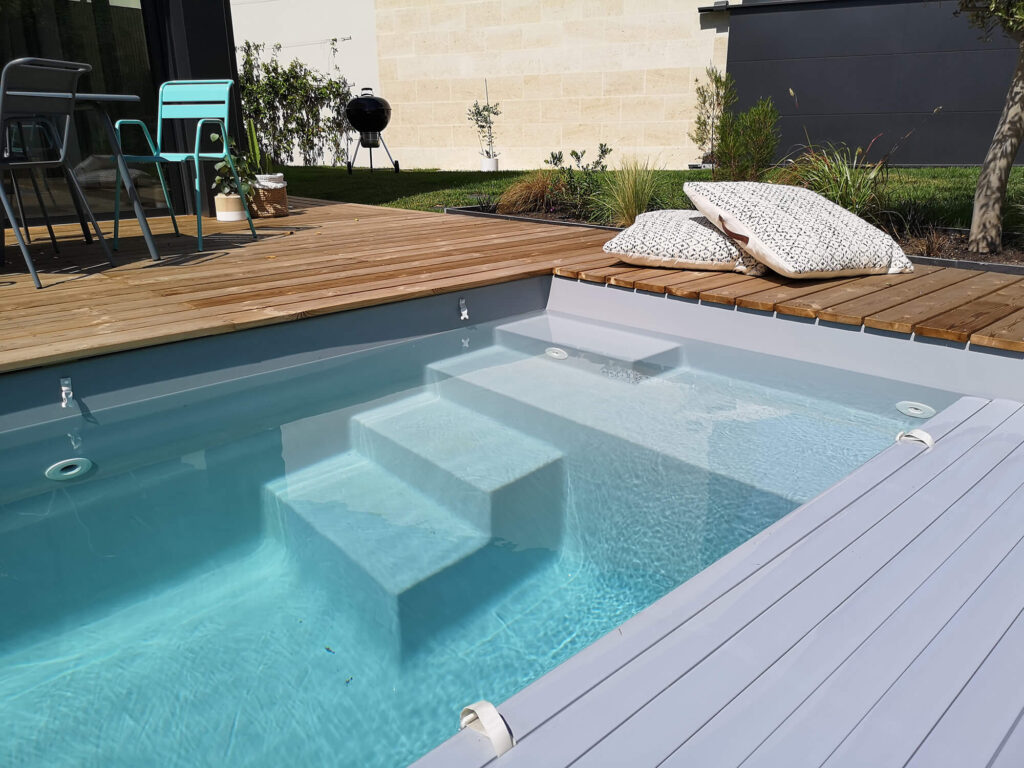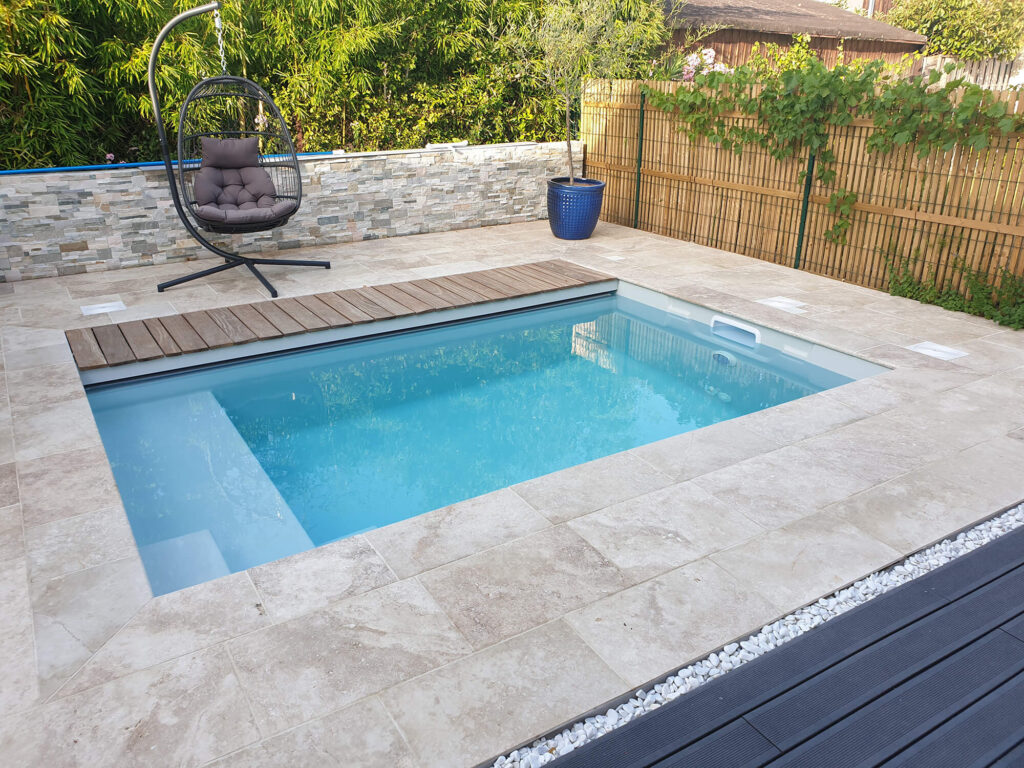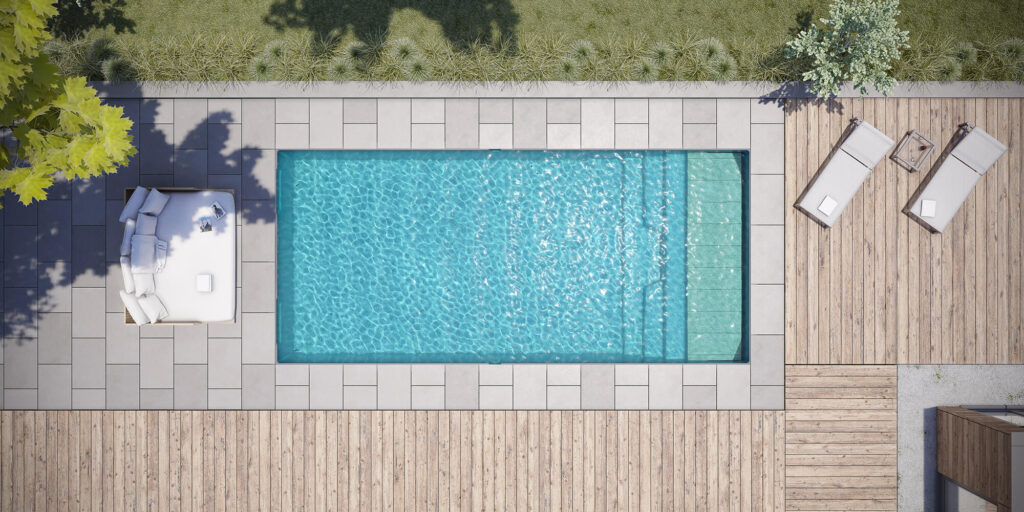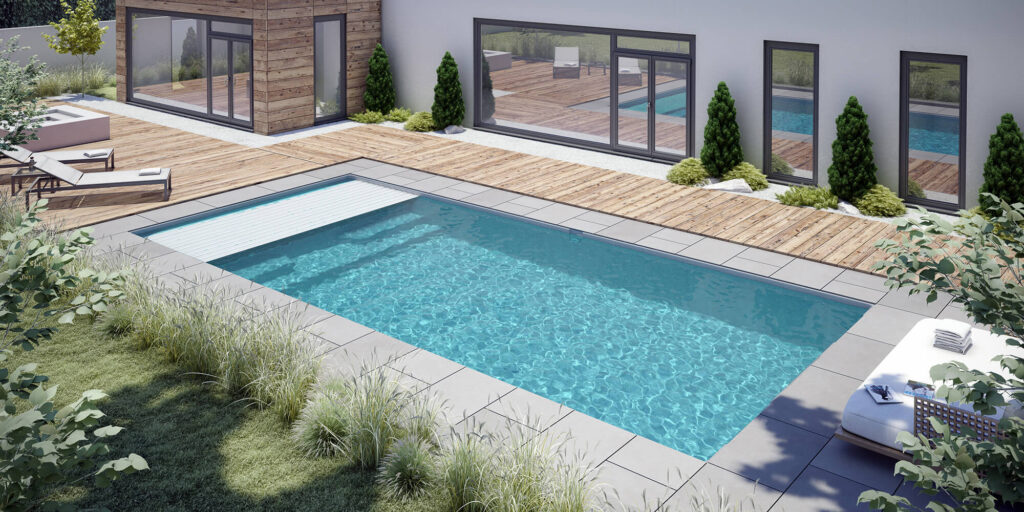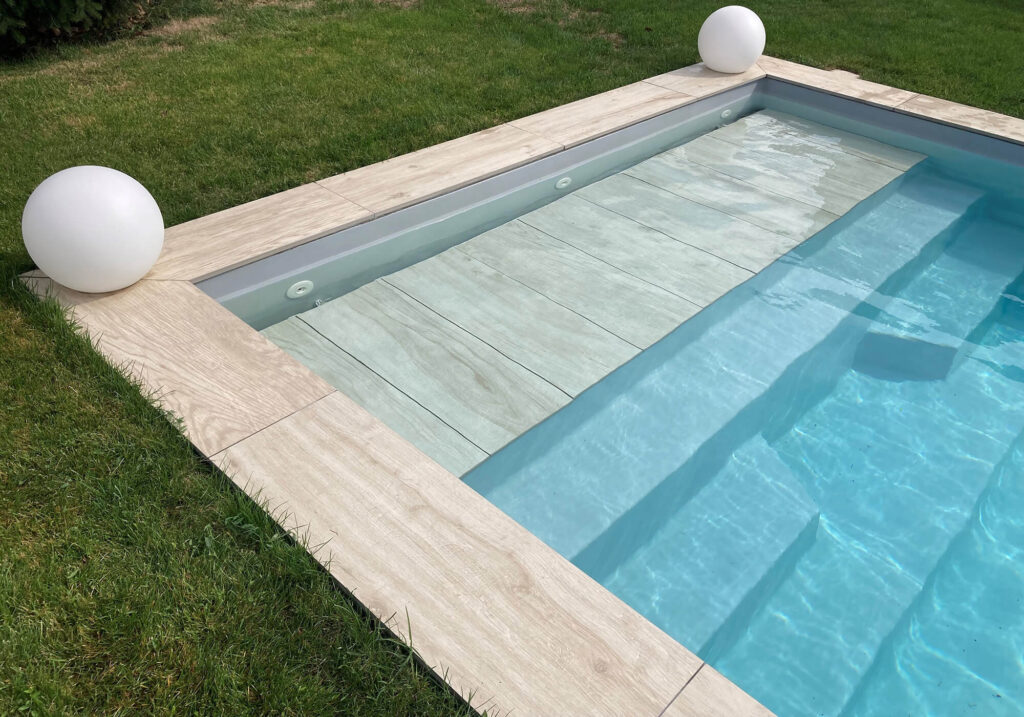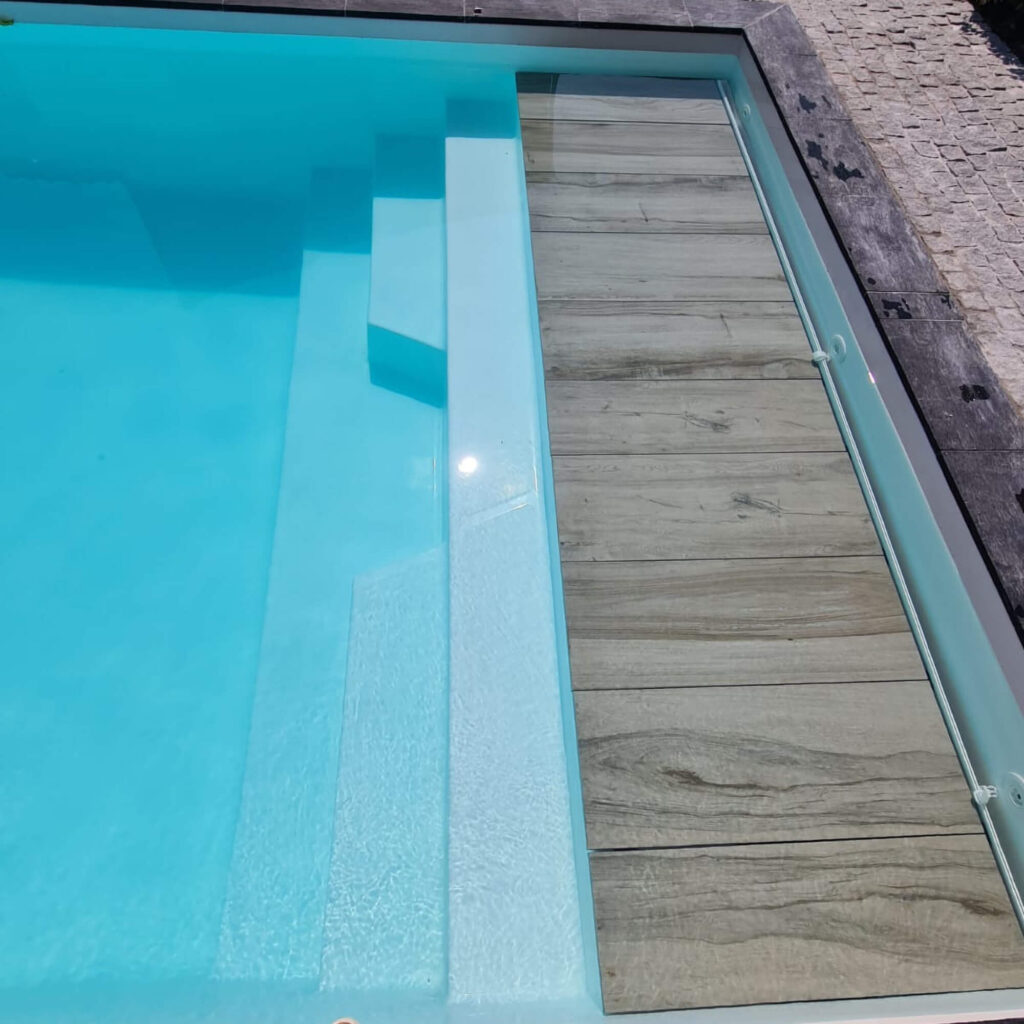Unlike a concrete pool, the installation of a polyester shell pool is a popular solution thanks to its speed of installation, excellent value for money and durability. durability. However, despite its many advantages, a problem can sometimes arise after installation: the pool starts to move, lift or sink. This can have serious consequences, ranging from simple misalignment to structural cracks that threaten the integrity of the pool.
But then, what are the main causes of a swimming pooland, above all, how can this type of problem be prevented?
Find out the answers to all your questions now.
Why does my shell pool move?
As a general rule, a shell pool generally remains stable over the years. However, some pools can move, heave or collapse, causing more or less serious damage.
This phenomenon can be caused by a number of factors, often linked to the nature of the soil. soil typeenvironmental conditions or installation errors.
1. Soil type
The ground on which the pool rests plays a key role in its stability. Some soils are more prone to movement than others, and a poor assessment of the ground prior to installation can be the cause of many problems.
- The clay soils Clay soils are notoriously sensitive to climatic variations. In dry periods, the clay shrinks, creating voids beneath the pool. Over time, these voids can lead to collapse of the shell. Conversely, when it rains heavily, the clay fills with water and swells, creating lateral and vertical pressures on the pool that can cause it to move.
- The sandy or backfilled soils Less compact than rocky or limestone soils, these soils can settle under the weight of the pool. If the initial compaction has not been carried out correctly, this can lead to partial or total subsidence of the pool.
2. Non-compliant installation
A shell pool must be installed according to precise rules to guarantee its stability. Any error in installation can weaken the structure and encourage undesirable movements.
- Poor terracing: errors in terracing can have serious repercussions on the stability of the basin stability. A poorly dimensioned hole, or one dug with irregular walls, can result in poor support for the pond. An inadequately levelled bottom can lead to load differences and encourage hull movements.
- Unsuitable backfill: using earth or sand as backfill is a mistake, as these materials tend to settle over time, leading to subsidence. Rolled gravel backfill is recommended, as it ensures good drainage and prevents the basin movement.
- The absence of a concrete invert: some installers prefer to lay the shell directly on the ground without creating a concrete invert. concrete invertThis can be a problem if the ground is unstable. An invert distributes loads more evenly and ensures a flat, solid base.
3. Poor management of the decompression well
The decompression well is an essential but often overlooked element. Its role is to evacuate water from beneath the pool, particularly in the event of a high water table.
If this device is missing, blocked or poorly maintained, the water accumulated under the shell can generate upward pressure. When a pool is emptied without taking this pressure into account, the force of the groundwater can cause the shell to lifting of the pool shellsometimes causing irreversible damage.
How to prevent a shell pool from moving?
To avoid this problem, a number of precautions need to be taken from the moment the pool is installed and throughout its use.
- Prepare the site well: prior to any installation, a soil survey is strongly recommended to identify the soil composition and the possible presence of a water table. This analysis enables us to adapt the layout of the pond and plan appropriate solutions, such as laying a concrete slab or a drainage system.
- Install a decompression welln efficient: as mentioned above, a decompression well regulates water pressure around the pool. It must be well designed, installed close to the pool and regularly maintained to evacuate excess groundwater.
- Follow the manufacturer's recommendations: a polyester hull must be installed in accordance with the manufacturer's recommendations. It is essential to follow all recommended steps, especially when backfilling and filling the pool and surrounding area at the same time.
- Never empty the pool completely without taking precautions: emptying a shell pool without taking precautions is risky, especially if groundwater is present. Before emptying the pool, it is advisable to consult a professional to avoid deformation or or lifting of the shell.
What to do if your shell pool moves?
Once installed, a swimming pool is not designed to move. That's why, if your pool is showing signs of movement, it's best to act quickly to limit the damage and prevent the situation from worsening. The first step is to identify the source of the problem: ground subsidence, groundwater pressure or faulty installation.
Calling in a professional is often essential to establish a precise diagnosis and determine the best solution to adopt.
Ground subsidence
If the problem is caused by ground subsidenceit may be necessary to reinforce the pool support by injecting expanding resin under the pool to stabilize the structure. In some cases, additional earthworks or the creation of a concrete raft may be required to prevent further movement.
Presence of a water table
When the problem originates from the water table, the installation or release of a decompression well to relieve the pressure under the hull. A suitable pump can be installed to evacuate accumulated water and limit the risk of lifting. If the pool has already moved pool repositioning may be necessary, although this is a costly and time-consuming operation.
Cracked pool shell
Finally, when a hull cracks as a result of these movements, repair work on the repair work may be essential. The application of a specific resin and a protective gelcoat can restore the watertightness of your polyester pool. However, if the damage is too extensive, replacement of the shell may be the only viable alternative.
In all cases, it's advisable to act at the first sign of trouble to avoid major complications that could compromise the use of your pool for good. Finally, if your pool has been recently installed, it may be covered by a ten-year warranty. This insurance protects against defects affecting the solidity of the structure. If a structural problem is found, you can invoke this guarantee to have the repairs paid for.
Configure your pool online Back to all news
